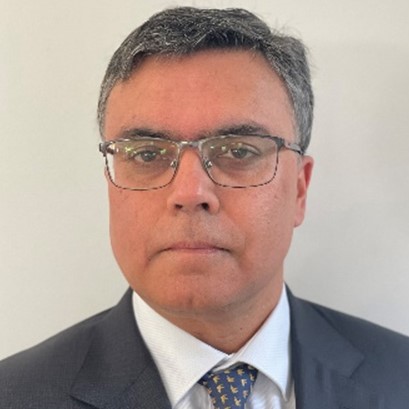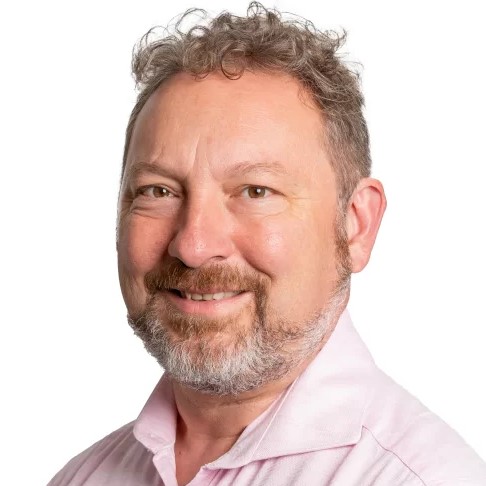 Vikram Singh
Vikram Singh
Head of Renewable Gas Development
Australian Gas Infrastructure Group (AGIG)
- Analysing the economics of getting a return on investment in a nascent industry
- Building and investing scaled up production without guaranteed buyers
- Incentivising customers to pay a “green premium” for a more costly lower-carbon product
 Alex Butterworth-Boord
Alex Butterworth-Boord
Head of Commercial, Strategy and Operations
Ark Energy
- Practical analysis of the economics of renewable gases compared to natural gas for peaking generation
- Interactions between green fuel export markets and the domestic electricity grid
- Identifying opportunities for green gases within the physical constraints of the gas network, focusing on least-cost alternatives
- Addressing the ‘chicken-and-egg’ issue of customer demand for developing projects without a committed offtake
 Joel Gilmore
Joel Gilmore
General Manager Regulation & Energy Policy
Iberdrola
- How is the Safeguard Mechanism impacting investments in decarbonisation?
- Does natural gas scarcity mean a sharpened need for alternatives gases, or will electrification take the place of gas altogether?
- Which alternatives to natural gas are most viable and how attractive are these projects to investors?
Moderator:
 David Norman
David Norman
Chief Executive Officer
Future Fuels CRC
Panellists:
 Matthew Clemow
Matthew Clemow
Group Manager, Gas Market and System Operations
Australian Energy Market Operator (AEMO)
 Joel Gilmore
Joel Gilmore
General Manager Regulation & Energy Policy
Iberdrola
 Alex Butterworth-Boord
Alex Butterworth-Boord
Head of Commercial, Strategy and Operations
Ark Energy
 Jarrod Irving
Jarrod Irving
General Manager - Renewable Gas and Fuels
LMS Energy
- Accounting for renewable gas in the Future Gas Strategy and Future Made in Australia policies
- Setting clear targets for renewable gas adoption and production through a national Renewable Gas Target (RGT)
- Encouraging investment in renewable gas infrastructure
- Promoting innovation through research and development incentives
- Streamlining approval processes for renewable gas projects
- Ensuring compliance with environmental sustainability standards
 Suzie Jakobovits
Suzie Jakobovits
GM Renewable Gas
Jemena
- Probing the key assumptions underpinning the ESOO and ISP and the probability they will (not) occur
- Entrenching a reliance on gas by making risky assumptions around gas (and coal) generation
- Focusing on minimum demand levels on the grid (and has South Australia has already reached the tipping point?)
- Highlighting opportunities for renewable gases in diversifying gas supply, enhancing system reliability, and avoiding massive overbuild of renewable generation and transmission powerlines – saving a lot of pain
- Examining AEMO’s GSOO and how this is developing in terms of a vision for renewable gases’ in achieving long-term decarbonisation and integrating with future infrastructure planning across the energy system
 Jim Snow
Jim Snow
Adjunct Professor | Executive Director
University of Queensland | Oakley Greenwood
- Assessing the progress of renewable gas projects in Australia
- Examining the potential impact of a renewable gases certification scheme under the National Greenhouse and Energy Reporting Scheme on emission reductions
- Exploring how expanding the Hydrogen Headstart Program to include biomethane could aid in scaling up and developing renewable gases
- Identifying key factors in setting a suitable Renewable Gas Target for Australian industry by 2030 as part of the Net Zero Plan
 Dennis Van Puyvelde
Dennis Van Puyvelde
Head of Renewable Gas
Energy Networks Australia
- Improving the process of converting organic waste to biogas (used to power electricity turbines)
- Generating electricity to power both the Wollert facility itself and the sewage treatment plant, with excess energy exported to the grid
- Building a new Lilydale facility whilst refurbishing the existing plant based on learnings and experiences of the local market
- Ensuring that the plant operation remains flexible to it can continue to innovate
 Stephanie Salinas
Stephanie Salinas
Manager Waste to Energy Services
Yarra Valley Water
- Should the government ban natural gas as an energy source for new builds? Are there consequences to such a ban?
- Which renewable gas—hydrogen or biomethane—offers the greatest advantage for Australia's energy demand profile, distribution network, and market? Are there specific applications or scenarios where one is more suitable than the other?
- What short- and long-term challenges does Australia face in adapting its production, storage, and delivery infrastructure, as well as end-user systems, to renewable gases?
- How do renewable gases compare with traditional natural gas in terms of energy output by volume?
- What percentage of Australia's total energy consumption could hydrogen and biomethane each contribute, and over what time frame?
Moderator:
 John Chaumont
John Chaumont
Principal
Streamline Hydraulic Management
Panellists:
 Dennis Van Puyvelde
Dennis Van Puyvelde
Head of Renewable Gas
Energy Networks Australia
 Stephanie Salinas
Stephanie Salinas
Manager Waste to Energy Services
Yarra Valley Water
 Philippa Minton
Philippa Minton
Market Development and Strategy Manager - Renewable Gas
Jemena
 Brad Bailey
Brad Bailey
Senior Project Officer
GreenPower


 Jai Coppen
Jai Coppen